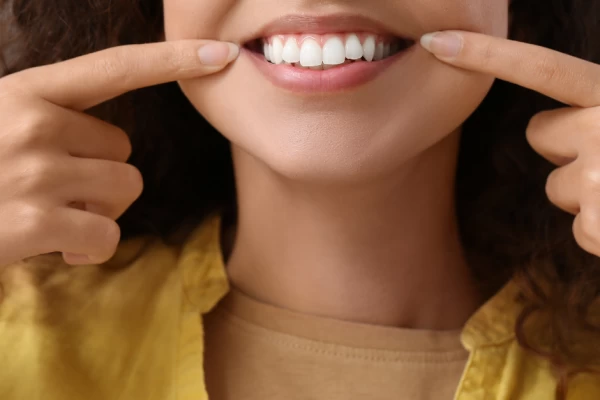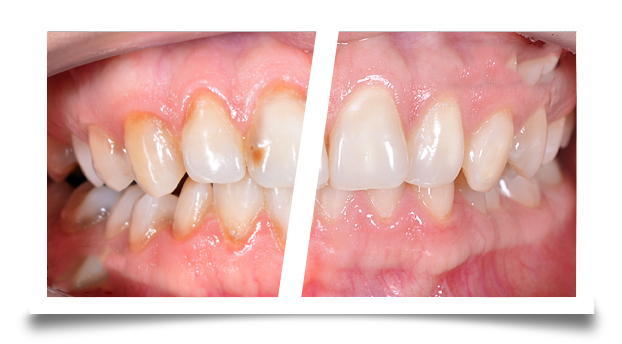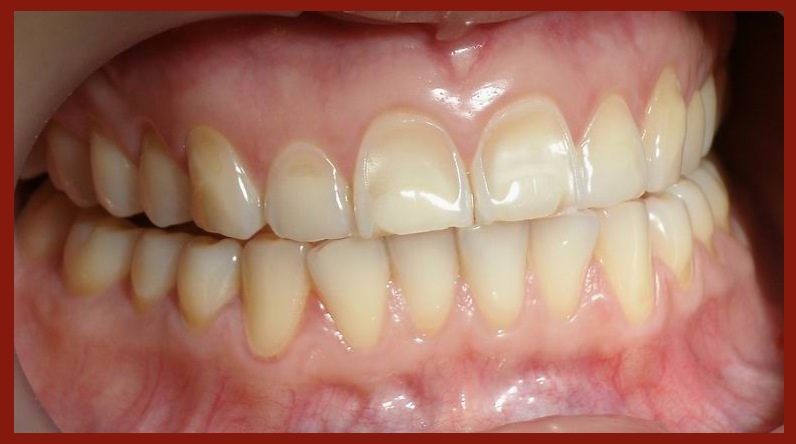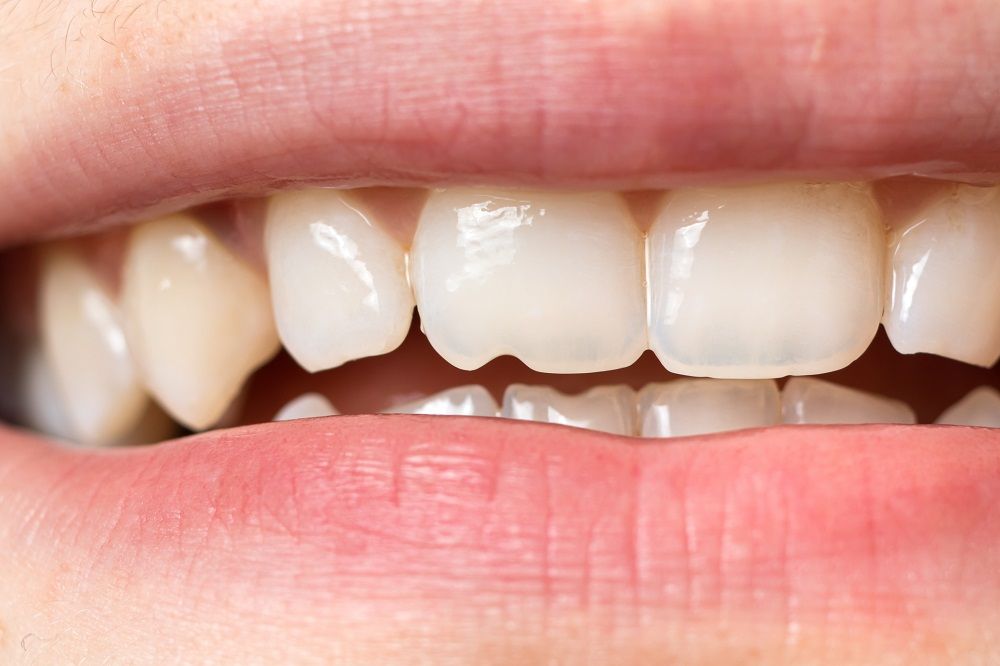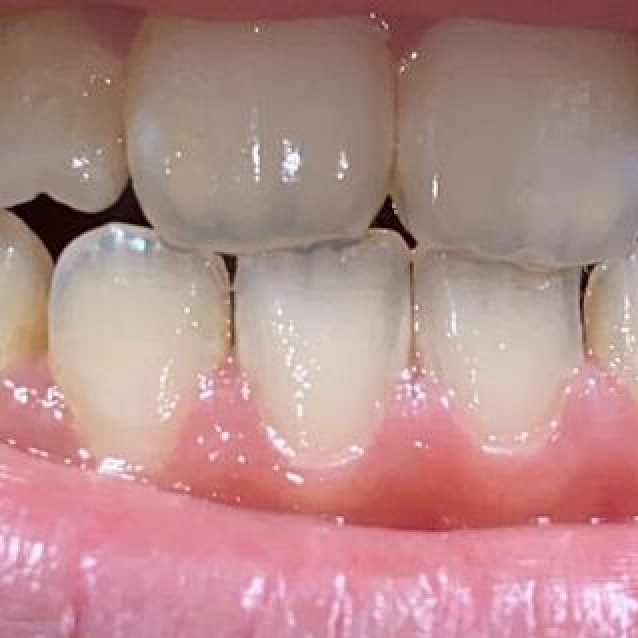The Causes and Symptoms of Enamel Erosion: Understanding the Signs and Preventing Damage
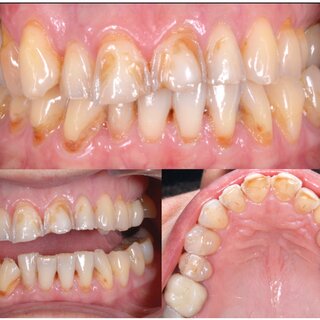
Tooth enamel is the outermost layer of your teeth and serves as a protective shield against physical and chemical damage. Despite being the hardest substance in the human body, enamel is not invincible. Over time, it can erode due to various factors, leading to dental problems such as sensitivity, decay, and discoloration. This guide explores the common causes and symptoms of enamel erosion and offers insights into how to prevent further damage.
What is Enamel Erosion?
Enamel erosion refers to the gradual loss of the enamel layer on your teeth, which can occur due to exposure to acids from food, beverages, or even certain health conditions. Unlike other tissues in the body, enamel cannot regenerate, making prevention and early intervention critical.
As enamel wears away, the underlying dentin (the softer layer beneath the enamel) becomes exposed, leading to tooth sensitivity and an increased risk of decay. Understanding the causes and symptoms of enamel erosion is the first step toward protecting your teeth from long-term damage.
Common Causes of Enamel Erosion
Several factors can contribute to enamel erosion, and identifying them can help you take proactive steps to preserve your enamel.
1. Dietary Acids
Acidic foods and drinks are one of the most common causes of enamel erosion. The acids in these substances weaken and soften the enamel, making it more vulnerable to wear.
Common Acidic Foods and Drinks:
- Carbonated Beverages: Sodas and energy drinks contain high levels of acids that erode enamel.
- Citrus Fruits: Lemons, oranges, and grapefruits are healthy but highly acidic.
- Fruit Juices: Even though fruit juices are rich in vitamins, they are often acidic enough to damage enamel.
- Vinegar-Based Foods: Salad dressings, pickles, and other foods containing vinegar can contribute to erosion.
- Wine: Both red and white wine are acidic and can contribute to enamel loss.
2. Frequent Snacking
Frequent snacking, particularly on sugary or starchy foods, increases the amount of acid produced in the mouth. Bacteria in the mouth feed on sugar and starch, producing acids that erode the enamel.
Why Frequent Snacking is Harmful:
- Each time you eat, acid levels rise in your mouth. The more frequently you snack, the more exposure your enamel has to these harmful acids.
- Without time for saliva to neutralize the acids, enamel becomes weakened and more prone to damage.
3. Poor Oral Hygiene
Inadequate brushing and flossing habits can lead to plaque buildup on your teeth. Plaque is a sticky film of bacteria that produces acids when exposed to sugars. Over time, the acid from plaque can erode enamel, leading to cavities and sensitivity.
Factors Leading to Enamel Erosion from Poor Hygiene:
- Plaque Accumulation: Without regular brushing and flossing, plaque remains on your teeth, leading to acid attacks.
- Skipping Dental Visits: Without professional cleanings, plaque can harden into tartar, further damaging the enamel.
4. Acid Reflux and GERD
Acid reflux and gastroesophageal reflux disease (GERD) expose the mouth to stomach acids. When stomach acid flows back into the mouth, it can erode enamel over time. People with acid reflux may experience enamel erosion on the back teeth or the insides of the lower teeth.
How Acid Reflux Affects Enamel:
- Stomach acids are extremely corrosive and can erode enamel quickly.
- Regular exposure to stomach acid can lead to noticeable enamel loss and increased tooth sensitivity.
5. Dry Mouth (Xerostomia)
Saliva plays a crucial role in maintaining a healthy mouth. It helps neutralize acids, wash away food particles, and remineralize enamel. When you suffer from dry mouth, either due to dehydration or as a side effect of medication, your mouth produces less saliva, leaving your enamel vulnerable to acid attacks.
Causes of Dry Mouth:
- Medications: Some antihistamines, antidepressants, and blood pressure medications can reduce saliva production.
- Dehydration: Inadequate fluid intake can also contribute to dry mouth, increasing the risk of enamel erosion.
- Health Conditions: Conditions like Sjögren’s syndrome and diabetes can lead to chronic dry mouth.
6. Teeth Grinding (Bruxism)
Bruxism, or teeth grinding, can wear down the enamel over time. This condition often occurs during sleep, so many people are unaware they grind their teeth until they experience enamel erosion, tooth sensitivity, or jaw pain.
How Bruxism Affects Enamel:
- Grinding places constant pressure on the teeth, physically wearing down the enamel layer.
- As enamel thins, teeth become more prone to fractures and increased sensitivity.
7. Medical Conditions and Eating Disorders
Certain medical conditions and eating disorders can also contribute to enamel erosion. For example, individuals with bulimia frequently expose their teeth to stomach acids due to repeated vomiting. This constant acid exposure erodes the enamel, particularly on the backs of the teeth.
Symptoms of Enamel Erosion
Recognizing the early symptoms of enamel erosion is critical to preventing further damage. The earlier you identify enamel loss, the sooner you can take action to strengthen and protect your teeth.
1. Increased Tooth Sensitivity
One of the first signs of enamel erosion is tooth sensitivity. As enamel wears away, the underlying dentin becomes exposed. Dentin contains small tubules that connect to the tooth’s nerve, making it more sensitive to external stimuli.
Signs of Sensitivity:
- Pain or discomfort when consuming hot, cold, sweet, or acidic foods and drinks.
- Sharp, sudden pain when breathing in cold air.
2. Discoloration of Teeth
As enamel erodes, the yellowish dentin layer beneath the enamel becomes more visible, leading to a discolored appearance. Teeth may begin to look yellow or translucent around the edges.
Types of Discoloration:
- Yellowing: The exposed dentin gives teeth a more yellow appearance as enamel thins.
- Translucency: In some cases, the edges of the teeth may become more translucent or appear thin.
3. Rounded or Smooth Edges
Eroded enamel may lead to teeth that have rounded, smooth, or cupped edges. This is a sign of physical wear and tear on the enamel, often caused by grinding or acidic foods.
Visible Changes to Tooth Shape:
- Rounded edges, especially on front teeth.
- Flattened chewing surfaces on molars.
4. Cracks, Chips, or Cupping
As enamel weakens, your teeth become more prone to physical damage. You may notice small cracks, chips, or cupping (small indentations) on the surface of your teeth.
Enamel Erosion Damage:
- Cracks and Chips: Thinned enamel increases the risk of cracks or chips, particularly when biting down on hard foods.
- Cupping: Small, rounded indentations may appear on the chewing surfaces of your teeth.
5. Increased Tooth Decay
Enamel erosion often leads to an increased risk of cavities, as weakened enamel is less able to protect the teeth from bacteria. Cavities may develop more quickly in areas where enamel is thin or worn away.
Signs of Tooth Decay:
- Dark spots or holes on the teeth.
- Pain or discomfort when chewing or biting.
Preventing Enamel Erosion
Preventing enamel erosion requires a combination of good oral hygiene, dietary adjustments, and regular dental visits. Here are some practical steps you can take to protect your enamel:
- Use Fluoride Toothpaste: Fluoride helps strengthen enamel and prevent further erosion.
- Rinse After Eating Acidic Foods: Drink water or rinse your mouth with water after consuming acidic foods or beverages.
- Limit Acidic Foods and Drinks: Cut back on sodas, fruit juices, and other acidic substances to reduce enamel erosion.
- Chew Sugar-Free Gum: Chewing gum increases saliva production, which helps neutralize acids.
- Wear a Mouthguard: If you grind your teeth at night, ask your dentist about a custom mouthguard to protect your enamel.
- Stay Hydrated: Drink plenty of water to combat dry mouth and promote healthy saliva production.
Conclusion: Protect Your Enamel for Long-Term Dental Health
Enamel erosion is a gradual but serious process that can lead to significant dental problems. By understanding the causes and symptoms of enamel erosion, you can take proactive steps to protect your teeth and maintain strong, healthy enamel. Early detection and prevention are key, so be sure to visit your dentist regularly and follow good oral hygiene practices to preserve your enamel for years to come.
Further Reading:
- How to Strengthen Tooth Enamel
- The Role of Fluoride in Enamel Protection
- How Diet Affects Your Enamel Health
References:
- American Dental Association (ADA). “Protecting Tooth Enamel from Erosion.”
- Mayo Clinic. “Enamel Erosion: Causes and Prevention.”
- National Institute of Dental and Craniofacial Research (NIDCR). “Understanding Enamel Erosion and Its Impact on Oral Health.”

